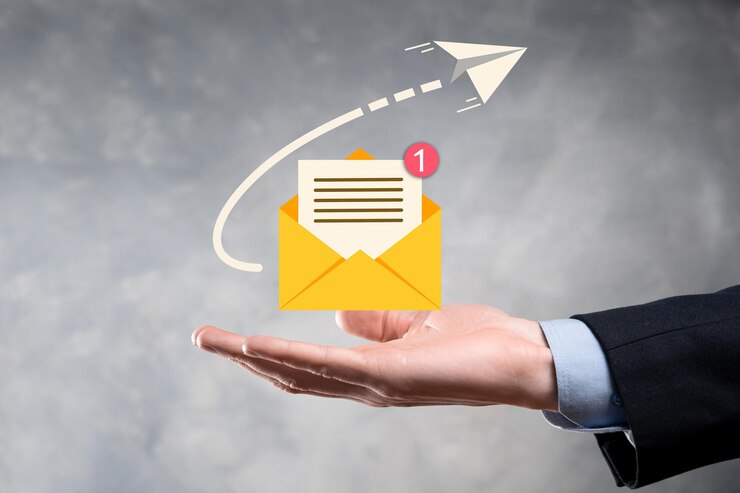In an age dominated by digital marketing, you might be forgiven for thinking that traditional advertising methods like direct mail are obsolete. However, contrary to popular belief, direct mail is still alive.
This article will explore why direct mail remains a valuable and relevant marketing tool in the 21st century. It has a lot of valuable information to impart. Hence, if you are looking forward to direct mail marketing, this comprehensive guide is your ultimate destination.
So, let’s get started…
What Is The Concept Of Direct Mail Marketing?
Direct mail refers to an advertising form where you have to send physical mail elements straight away to consumers. It can be a postcard, letter, catalog, or brochure. This category of outbound marketing lets businesses target a larger audience group and personalize their marketing messages. The goal of shooting direct mail is to generate responses from the recipients.
While direct mail includes sending down physical mail pieces, an email is quite different. The latter is an electronic marketing form where you have to send emails to a number of prospects. Furthermore, email has the same purpose as direct mail, such as lead generation, consumer loyalty, and retention programs.
Reasons Why Direct Mail Marketing Is Not Dead
Despite the rise of digital marketing and the internet, direct mail marketing is not dead, and it continues to be a viable strategy for many businesses.

Here are several reasons why direct mail marketing remains relevant:
Tangibility and Engagement
One of the primary reasons direct mail persists as an effective marketing strategy is its tangibility. A physical mail piece, whether a postcard, catalog, or personalized letter, offers a tactile experience that digital marketing cannot replicate.
This tangible connection enables potential customers to engage with your brand more deeply. People tend to spend more time reading and exploring physical mail, and they are more likely to retain it for future reference, thus extending the lifespan of your marketing message.
Targeted Marketing
Direct mail allows for highly targeted marketing campaigns. With access to data and analytics, businesses can pinpoint specific demographics, geographic areas, and consumer behaviors with remarkable precision.
This allows you to reach the right audience with tailored messages and offers. The result is a higher conversion rate and a more cost-effective marketing campaign.
High Open Rates
In a world where inboxes are overflowing with emails and online ads, direct mail, and leaflet distribution companies stand out. Research consistently shows that physical mail has higher open rates compared to emails.
The physicality of mail triggers curiosity, and recipients are more likely to open a well-designed and attractive mail piece. Your message will reach its intended recipient when it arrives in their mailbox, increasing visibility and brand recognition.
Creativity and Personalization
Direct mail offers a vast canvas for creativity and personalization that digital marketing can’t always match.
You can design eye-catching postcards, brochures, and catalogs that capture attention. Personalization can be taken to the next level with custom offers and messages that resonate with each recipient.
Using variable data printing, you can address recipients by their name, include tailored product recommendations, and even provide unique discount codes, significantly enhancing the personal touch and increasing the likelihood of conversion.
Multichannel Integration
The most successful marketing campaigns often involve a combination of strategies. Direct mail can easily be integrated into a broader multichannel approach.
For example, a direct mail piece can lead recipients to a website, social media channels, or an app, enhancing your online presence and reinforcing your message.
By coordinating your direct mail with other marketing efforts, you can create a consistent brand experience across various channels, boosting customer engagement and brand loyalty.
Measurable Results
Direct mail campaigns provide measurable results. By using tracking and analytics tools, you can determine the effectiveness of your campaign, from open rates to response rates and conversions.
This data-driven approach allows for continuous improvement. It also provides valuable insights into your audience’s preferences and behaviors, helping you tailor future campaigns for even better results. This tangible data-driven approach can lead to a higher return on investment, which is essential in any marketing strategy.
Trust and Credibility
In an era marked by concerns over privacy, cyber security, and the authenticity of digital communications, direct mail stands out as a trusted and credible form of marketing. People tend to trust physical mail more than online communications.
A well-designed and professionally printed mail piece carries an air of legitimacy and authenticity that can be difficult to replicate digitally. Leveraging this trust and credibility can significantly enhance your brand’s reputation and establish a stronger connection with your audience.
Bonus Points About Direct Mail Marketing You Need To Remember
Now that you know why direct mail advertising is the best for you, here are a few bonus points. Do not forget to consider them as well because all leads to your success:
Direct Mail Offers Higher ROI
We have discussed how direct mail is highly open in comparison to emails, but that’s not all! It also provides more return on investment. Research says that direct mail marketing provides a 29% median ROI.
If that doesn’t seem too high, think this way. When you take paid search as a way of getting 23% ROI and 16% online display, this number will look more attractive.
It Works Good With Digital Marketing Strategies
No brand today can sustain itself without performing digital marketing. And what’s better than incorporating a direct mail marketing strategy? After all, both of them go hand in hand.
Blending direct mail with technological digital marketing strategies boosts the personal touch of an email.
Conclusion
Direct mail has evolved and remains a viable marketing strategy for numerous reasons. Its tangibility, high open rates, precision in targeting, personalization, and integration with other marketing channels make it a valuable asset in any marketing toolkit.
Direct mail can yield impressive results when executed correctly, providing a unique and effective way to reach your audience in an increasingly digital world.
So, don’t be quick to dismiss direct mail – it’s far from dead and continues to play a vital role in the marketing landscape. Its unique advantages make it an essential component of a well-rounded marketing strategy.
Read Also:






















